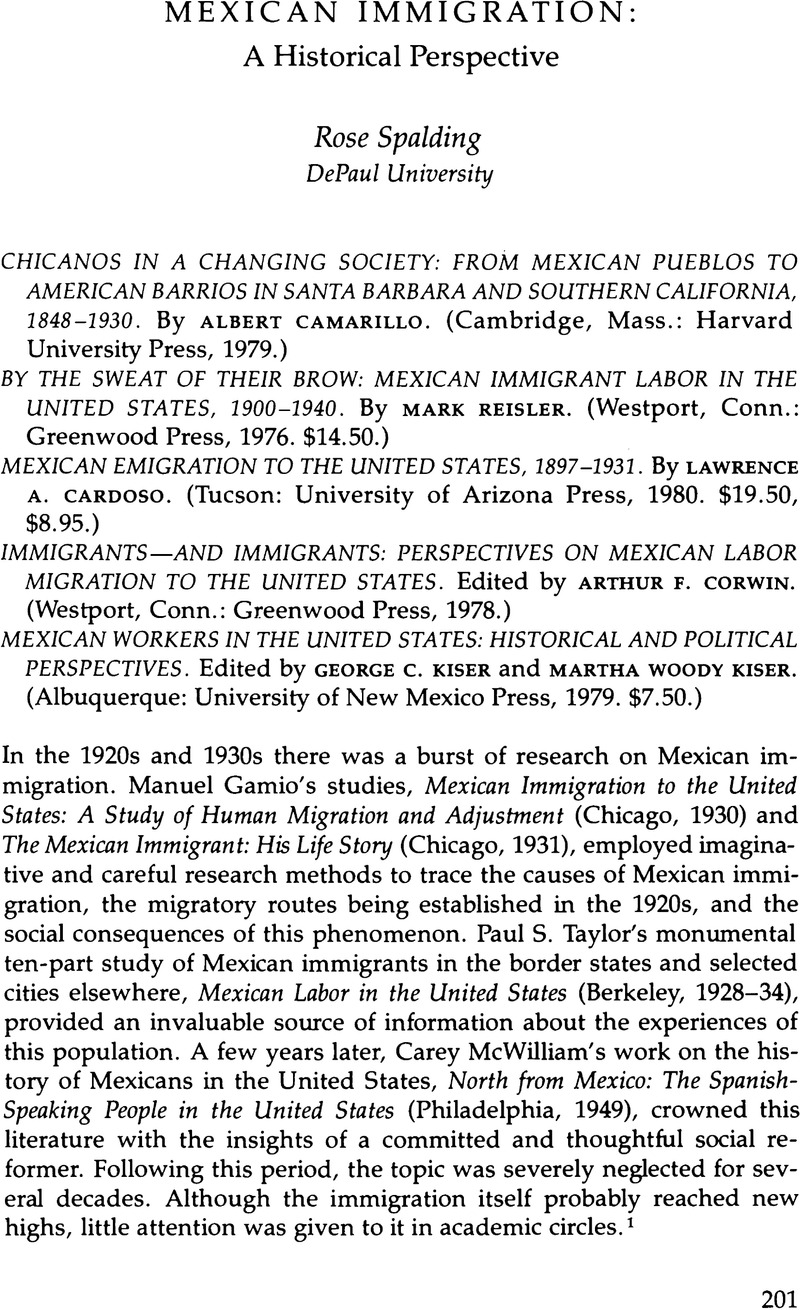Article contents
Mexican Immigration: A Historical Perspective
Review products
Published online by Cambridge University Press: 24 October 2022
Abstract

- Type
- Review Essays
- Information
- Copyright
- Copyright © 1983 by the University of Texas Press
References
Notes
1. Notable exceptions are Ernesto Galarza's Merchants of Labor (Santa Barbara, 1964) and Leo Grebler's Mexican Immigration to the United States: The Record and Its Implications (Los Angeles, 1965).
2. In 1900, 57 percent of the Spanish-surnamed male heads of household in Santa Barbara were unskilled workers; in 1930, 56 percent were in this category. For non-Hispanics, the figures were 14 percent and 11 percent, respectively (pp. 173–80).
3. Interesting studies of different areas include Douglas E. Foley et al, From Peones to Políticos: Ethnic Relations in a South Texas Town, 1900–1977 (Austin, 1977) and Oscar J. Martínez, Border Boom Town: Ciudad Juárez since 1848 (Austin, 1975).
4. Raul A. Fernandez, The United States-Mexico Border (Notre Dame, 1977), J. Craig Jenkins, “The Demand for Immigrant Workers: Labor Scarcity or Social Control?” (International Migration Review 12 [Winter 1978]:514-35), and Robert L. Bach, “Mexican Immigration and the American State” (International Migration Review 12 [Winter 1978]:536-58) have done more in this area.
5. “Mexican Emigration History, 1900–1970: Literature and Research,” LARR 8, no. 2 (1973):3–24.
6. See Kenneth Roberts et al., The Mexican Migration Numbers Game: An Analysis of the Lesko Estimate of Undocumented Migration from Mexico to the United States (Austin, 1978) and Sidney Weintraub and Stanley R. Ross, The Illegal Alien from Mexico (Austin, 1980), pp. 16–17.
- 2
- Cited by


